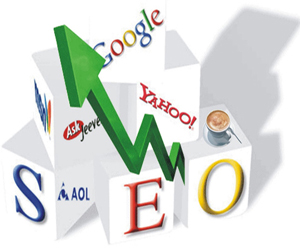


Reaching Your Audience Proactively

In the world of marketing, outbound marketing methods have long been a cornerstone of reaching and engaging audiences. While inbound marketing focuses on drawing customers in organically, outbound marketing takes a proactive approach by initiating contact with potential customers. In this article, we'll explore the fundamental aspects of outbound marketing, its strategies, and its enduring relevance in today's business landscape.
Defining Outbound Marketing
Outbound marketing, often referred to as traditional marketing, encompasses various strategies and channels through which businesses actively promote their products or services to a wide audience. These methods rely on pushing messages out to potential customers, aiming to capture their attention and generate interest. Outbound marketing typically involves more direct and interruptive tactics than inbound marketing.
Outbound Marketing Strategies
Television And Radio Advertising: TV and radio ads have been long-standing staples of outbound marketing. They offer a broad reach, allowing businesses to convey their messages to a large audience simultaneously.
Print Advertising: This includes newspaper and magazine advertisements. While print circulation has declined in the digital age, it remains a relevant channel for reaching specific demographics.
Direct Mail: Sending physical promotional materials, such as brochures or postcards, to a targeted mailing list is a form of outbound marketing. Direct mail can be highly effective when well-executed.
Cold Calling: This involves reaching out to potential customers via phone, introducing products or services, and seeking to initiate sales conversations.
Email Marketing: Although it can also fall under inbound marketing, email marketing campaigns that send promotional messages to a purchased or rented email list are considered outbound. These messages aim to generate leads or conversions.
Trade Shows And Events: Participating in trade shows and industry events provides opportunities to showcase products and services to a relevant audience.
The Enduring Value Of Outbound Marketing
While inbound marketing has gained significant traction due to its non-intrusive and customer-centric approach, outbound marketing continues to be valuable for several reasons:
Wide Reach: Outbound marketing methods can quickly and effectively reach a large audience, making them suitable for brand awareness campaigns.
Tangible Presence: Physical marketing materials, like brochures or billboards, provide a tangible and lasting impression, unlike digital ads that may be easily dismissed.
Personalization: When executed well, outbound marketing allows for personalization. Businesses can tailor messages to specific demographics or target audiences.
Lead Generation: Outbound marketing is often employed to generate leads and initiate direct sales conversations, which can be particularly useful in B2B marketing.
Complementary Role: Outbound marketing can work in conjunction with inbound strategies to create a comprehensive marketing approach that leverages the strengths of both methods.
Outbound marketing methods may not receive as much attention as their inbound counterparts in the current marketing landscape, but they still hold their place. These strategies provide a proactive way to introduce products or services, generate leads, and increase brand visibility. When carefully integrated into a well-rounded marketing strategy, outbound marketing can be a powerful tool for businesses aiming to reach and engage their target audience effectively.
Giving Voice To Your Thoughts And Passion
 1. Finding Your Voice: Blogging allows you to discover and refine your unique voice. It's a space where you can express your individuality, thoughts, and experiences. Whether you're passionate about travel, food, personal development, or any other niche, blogging provides an outlet to share your perspective and insights.
1. Finding Your Voice: Blogging allows you to discover and refine your unique voice. It's a space where you can express your individuality, thoughts, and experiences. Whether you're passionate about travel, food, personal development, or any other niche, blogging provides an outlet to share your perspective and insights.
2. Storytelling And Connection: Blogging is an art of storytelling. When you share your personal stories, you create a sense of connection with your readers. Your experiences, struggles, and triumphs can inspire, educate, and comfort others who relate to your journey.
3. A Therapeutic Outlet: Blogging can be therapeutic. Many individuals find solace in pouring their emotions and experiences into their blog posts. It provides an avenue for self-reflection and a space to process thoughts and feelings.
Building A Strong Digital Foundation
 2. Thorough Market Research: Before venturing into online business development, research your target market. Understand your audience's demographics, preferences, and pain points. Analyze competitors and industry trends to identify opportunities for growth.
2. Thorough Market Research: Before venturing into online business development, research your target market. Understand your audience's demographics, preferences, and pain points. Analyze competitors and industry trends to identify opportunities for growth.
3. Comprehensive Business Plan: A detailed business plan is a roadmap to success. It outlines your strategies, budgets, revenue projections, and timelines. A well-structured plan will keep you focused and help you measure progress.
4. Build A User-Friendly Website: Your website is your digital storefront. Invest in professional web design that is user-friendly and responsive on all devices. Ensure that your site provides an excellent user experience and is optimized for search engines.






 Flexible Revenue Generation: For individuals seeking additional income during uncertain times, affiliate marketing offers a flexible and scalable solution. You can start small and gradually expand your affiliate marketing efforts as you become more proficient. This adaptability allows you to respond to changes in the economic landscape quickly.
Flexible Revenue Generation: For individuals seeking additional income during uncertain times, affiliate marketing offers a flexible and scalable solution. You can start small and gradually expand your affiliate marketing efforts as you become more proficient. This adaptability allows you to respond to changes in the economic landscape quickly.
Diversification Of Income Streams: Economic uncertainty often means that traditional income sources may become less stable. Affiliate marketing enables individuals to diversify their income streams by promoting products or services across various niches and industries. A diversified portfolio can provide a safety net during financially turbulent times.
Remote Work Opportunity: Affiliate marketing can be conducted from anywhere with an internet connection. This makes it an ideal option for those looking to work remotely or make ends meet while navigating economic challenges. You can operate as an affiliate marketer from the comfort of your home, a co-working space, or any location that suits you.
Performance-Based Compensation: Affiliate marketing operates on a performance-based model. Marketers are rewarded for their efforts, and businesses only pay when they see results. This aligns with the risk-averse approach that many adopt during economic uncertainty.
Targeted Marketing: Affiliate marketing allows businesses to target specific niches and audiences effectively. In times of economic instability, this precision can be particularly beneficial, as it ensures that marketing resources are invested where they are most likely to yield returns.
Data-Driven Optimization: Data and analytics are integral to affiliate marketing. Marketers can leverage data to analyze and optimize their strategies, making the most of every marketing dollar.
Evolution And Opportunities
 The Impact Of Digital Connectivity: One of the defining aspects of blogging in the digital age is the sheer accessibility it offers to both creators and consumers. The internet has created a global stage, enabling bloggers to reach audiences around the world. Digital connectivity has made it easier than ever for individuals to share their thoughts, knowledge, and creativity, whether they are seasoned professionals or beginners just starting their journey.
The Impact Of Digital Connectivity: One of the defining aspects of blogging in the digital age is the sheer accessibility it offers to both creators and consumers. The internet has created a global stage, enabling bloggers to reach audiences around the world. Digital connectivity has made it easier than ever for individuals to share their thoughts, knowledge, and creativity, whether they are seasoned professionals or beginners just starting their journey.
The rise of social media and mobile technology has further amplified the influence of blogging. Bloggers can share content instantly through platforms like Instagram, Twitter, and Facebook, driving traffic to their websites and engaging with their audience in real-time. This interconnectivity has made the relationship between bloggers and their readers more dynamic and engaging.
Blogging For Diverse Purposes: In the digital age, blogging serves diverse purposes. For some, it's a form of self-expression, where individuals share their personal stories, thoughts, and experiences. Others use blogging as a means of knowledge sharing, disseminating information, tutorials, and insights to educate and inspire their readers. Additionally, blogging has become a profitable endeavor for many, with monetization options including affiliate marketing, sponsored content, and selling digital products.
The Future Of Blogging: As technology continues to advance, blogging will likely adapt and evolve further. Emerging trends such as video blogging (vlogging), live streaming, and immersive experiences through augmented and virtual reality are already reshaping the blogosphere. The future may see even more dynamic and interactive ways for bloggers to connect with their audiences.
Building A Profitable Digital Venture
 E-commerce: E-commerce is one of the most established and successful online business models. It involves selling physical or digital products through a website or online marketplace. Amazon, eBay, and Shopify are prime examples of e-commerce platforms that have transformed the retail industry. The key to success in e-commerce is offering high-quality products, an intuitive online shopping experience, and excellent customer service.
E-commerce: E-commerce is one of the most established and successful online business models. It involves selling physical or digital products through a website or online marketplace. Amazon, eBay, and Shopify are prime examples of e-commerce platforms that have transformed the retail industry. The key to success in e-commerce is offering high-quality products, an intuitive online shopping experience, and excellent customer service.
Subscription Services: Subscription-based models are flourishing across industries. Businesses like Netflix, Spotify, and Dollar Shave Club offer products or services on a recurring subscription basis. This model provides steady revenue and builds long-term customer relationships. The key is to deliver consistent value to retain subscribers.
Online Marketplaces: Online marketplaces like Airbnb and Etsy connect buyers and sellers, taking a commission on transactions. These platforms thrive by providing a user-friendly environment for individuals or businesses to offer their products or services.
Affiliate Marketing: Affiliate marketing is a performance-based model where individuals or businesses promote products or services from other companies and earn a commission for each sale or lead generated. This model can be an excellent way to monetize a blog or website, as seen with the Amazon Associates program.
Strategies For Success
 3. Fierce Competition
3. Fierce Competition
The online advertising space is highly competitive, with numerous businesses vying for the attention of the same audience. It can be challenging to stand out amid this fierce competition. To overcome this challenge, marketers should focus on unique value propositions, targeted niche audiences, and creative ad placements to gain a competitive edge.
4. Data Privacy Concerns
Growing concerns about data privacy and regulations like GDPR have made it challenging for marketers to collect and use consumer data for ad targeting. To address this challenge, advertisers must ensure they comply with relevant data protection regulations and focus on transparent data collection and usage practices. They should also seek explicit consent from users when gathering data.
5. Ad Fraud
Ad fraud is a pervasive issue in online advertising, leading to wasted ad spend and skewed performance metrics. Marketers should use ad verification tools and work with reputable ad networks to minimize the impact of ad fraud. Regularly monitoring ad campaigns and analyzing performance data can also help identify and address fraudulent activities.
6. Ad Viewability
Ensuring that ads are viewable to the target audience is a crucial challenge. Marketers should optimize ad placements to enhance viewability, track viewability metrics, and invest in high-impact ad formats to increase the likelihood of ads being seen by users.
7. Mobile Optimization
With the increasing use of mobile devices, advertisers must ensure their ad campaigns are optimized for mobile viewing. Responsive design and mobile-specific ad formats are essential for reaching mobile audiences effectively.
8. Ad-Blocking Laws And Regulations
Different regions have specific laws and regulations concerning online advertising. Staying compliant with these rules can be a significant challenge. Marketers should invest in legal counsel, maintain up-to-date knowledge of regional regulations, and conduct due diligence to adhere to legal requirements.